Kent State University in Kent, Ohio, recently announced that its newest academic building, Crawford Hall, has earned a LEED Silver certification from the U.S. Green Building Council, according to a news release. The facility was recognized for its innovative design, water conservation technologies, energy-efficient systems, and sustainable construction materials, among other features.
The University of Kentucky in Lexington, Ky., recently announced the results of its Energy Program in Facilities Management, put into place eight years ago, according to a news release. Between the fiscal years of 2017 and 2025, the university’s campus grew by 13.6% while the energy use per square foot dropped by 19.2%.

Since the onset of the COVID-19 pandemic, office-to-alternative-use conversions have become a recurring subject of urban development discourse. Office utilization rates across major U.S. cities remain below 50%, with vacancy rates exceeding 27% in San Francisco and 16% in New York. Higher education facilities present programmatic and spatial use cases that align readily with the typical characteristics of commercial office buildings.

As climate change intensifies, educational spaces must evolve beyond basic sustainability toward true resilience – we must design environments that can adapt, respond, and thrive amid shifting, and intensifying, climate hazards. Drawing on indigenous wisdom and nature-based strategies, integrating resilient design offers a path to create learning environments that are not only functional but deeply in tune with their natural surroundings.
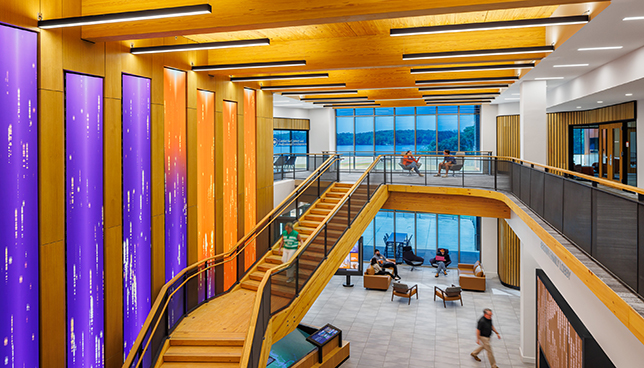
Clemson University’s Nieri Family Alumni and Visitors Center serves as the new front door to campus, anchoring the Tiger experience through each step in the student journey.
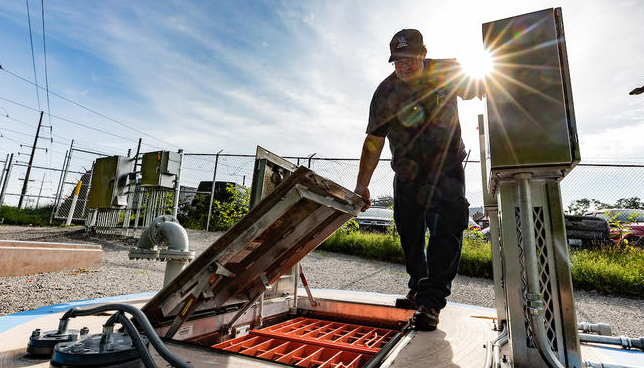
The Utilities and Energy Management team from the University of Kentucky recently received a Grand Award at the 2025 Engineering Excellence Awards, according to a university news release. The award from the American Council of Engineering Companies of Kentucky was for the university’s Central Utility Plant (CUP) Stormwater Harvesting System, which activated in fall 2023.
Norfolk State University recently announced that it has selected Voltus, Inc., to implement the university’s new energy efficiency program on its campus in Norfolk, Va. According to a news release, the partnership’s goal is to reduce campus energy use by 27% by the year 2030 and support grid reliability across the state of Virginia.
Zurn Elkay Water Solutions recently released an updated line of its Elkay Filtered Bottle Filling Stations, according to a news release. The new line features a sleeker design and functional upgrades to help simplify filter maintenance and reduce long-term labor costs.
American University in Washington, D.C., recently began a research project exploring the relationship between purchase decisions for university campuses and sustainability, according to a news release. The study seeks to explore how “greening” the purchases involved in student housing renovations, breaking ground on new facilities, buying new equipment and supplies, and more, can foster larger sustainability goals.
Fellowes, a worldwide provider of WorkLife needs product solutions, recently announced that it will be a Platinum sponsor of the Healthy Green Schools & Colleges program, according to a news release. The program from the Healthy Schools Campaign is intended to help facility professionals improve the educational experience for students and staff through sustainable facility operations and green schools.
Mullen Automotive recently announced that Princeton University in Princeton, N.J., recently purchased a Mullen THREE, Class 3 electric vehicle (EV) box truck upfit for its facilities operations unit, according to a news release. The unit includes about 350 vehicles—including cars, vans, golf carts, and construction vehicles—for various transportation needs around campus.
California Senate Bill 1182, the Climate Resilient Schools Act, recently passed the Assembly Appropriations Committee and will now face a vote on the Assembly Floor, according to a news release.
Xavier University of Louisiana (XULA) in New Orleans, La., recently announced the expansion of a community-run bikeshare program to its campus, according to a news release. Blue Bikes offers students, staff, and faculty a convenient and sustainable means of transportation in its first expansion since relaunching in fall 2021.

This episode’s guest is Michael Dunn, Technical Sales Manager for Energy Saving Ceilings & PCM at Armstrong World Industries. He’s here to talk about how Phase Change Material (PCM) can help provide energy savings in schools.
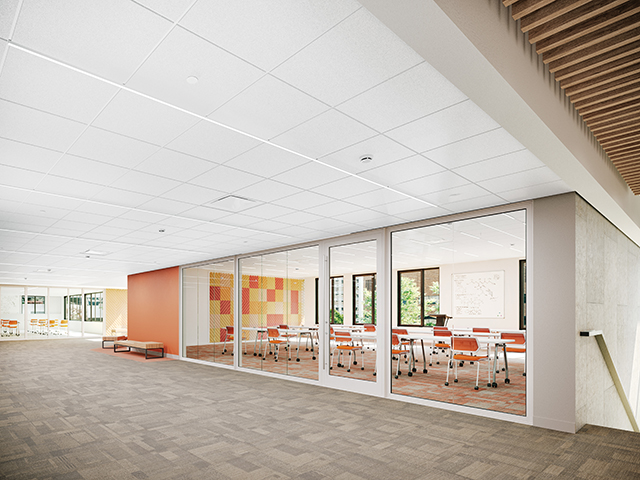
Schools nationwide—especially those in historically cool climates now undergoing elevated heat events—face a challenging cycle when it comes to adapting to climate-change-driven temperature extremes during the school year. Often if heating, ventilation, and air conditioning (HVAC) systems even exist, they are nearing end of life and operating less efficiently. Facing limited budgets, schools often opt for repairs over equipment replacement even though repairs can be costly and newer systems are designed for more efficient, sustainable operation offering long-term energy and cost savings.

In hopes of revitalizing the 200-year-old Colorado National Western Center, the Hydro building is a transformative, civic-centered, living laboratory that connects the urban core of Denver to the rural communities across the region through water literacy and conservation. As one of three signature buildings on the Colorado State University (CSU) Spur campus, Hydro reflects the water-focused research, education, and policy-making inside.
John Lewis Elementary School in Washington, D.C., recently became the first school in the award to be awarded both WELL and LEED certifications at the platinum level, according to a news release. As part of a three-step sustainability approach, the school is also aiming to become the first school in D.C. to achieve Net Zero Energy (NZE).
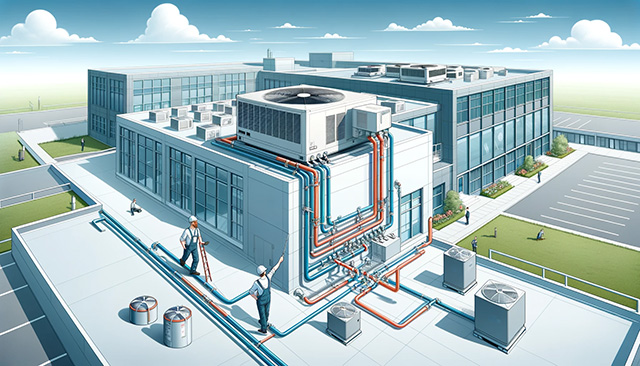
California State University, Dominguez Hills is one of four organizations to receive a One Water Award from the Metropolitan Water District of Southern California for major improvements to water management operations in Los Angeles, Riverside and San Diego counties.
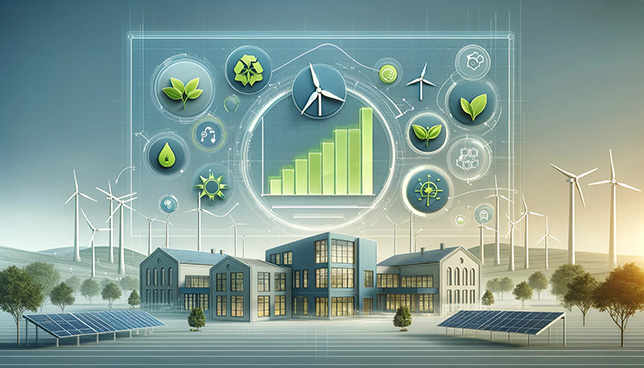
The Fresno Unified School District in Fresno, Calif., recently held a ribbon-cutting ceremony for a new 17.5-MW, district-wide solar energy and storage portfolio, according to a news release. The district partnered with ForeFront Power, a developer and asset manager of large-scale solar energy projects, to develop the project.
Here at Spaces4Learning, we recently launched a new resource on our website—the Glossary of School Facility Planning and Maintenance. It offers clear and concise definitions of key terms and concepts used in the planning, design, construction, and maintenance of K–12 and higher-education facilities.

We asked our readership to send us their predictions for 2024 trends in educational facilities. Across K–12 and higher-education campuses both, we asked for opinions on topics like technology, flexible learning spaces, campus safety & security, disaster response, and more. This article is the third in a three-part series compiling responses from educational professionals and vendors.

We asked our readership to send us their predictions for 2024 trends in educational facilities. Across K–12 and higher-education campuses both, we asked for opinions on topics like technology, flexible learning spaces, campus safety & security, disaster response, and more. This article is the second in a three-part series compiling responses from educational professionals and vendors.

The University of Houston System has entered into a multi-year partnership with TXU Energy to provide electricity across the entire system, including its university campuses and instructional sites as well as its athletic facilities. The agreement includes investments in UH scholarships as well as energy-efficiency projects.
The Burlingame School District in Burlingame, Calif., recently announced the upcoming launch of its Energy Infrastructure and Sustainability Program Phase II, according to a news release. Construction on HVAC modernizations and solar structures will begin early this year and is scheduled for completion before the beginning of the 2024–25 school year.
Architecture firm DLR Group recently partnered with the Riverside Community College District (RCCD) in Riverside, Calif., to offer a suite of sustainability services, according to a news release. RCCD is composed of three colleges (Moreno Valley College, Norco College, and Riverside City College), each of which will gain a new Sustainability and Climate Action Plan (SCAP), a Total Cost of Ownership dashboard (TCO), and Integrated Energy Master Plans (IMEP).
Auburn University’s School of Industrial & Graphic Design recently partnered with ABM Industries for a series of student senior projects involving the design of new and innovating EV charging stations, according to a news release.
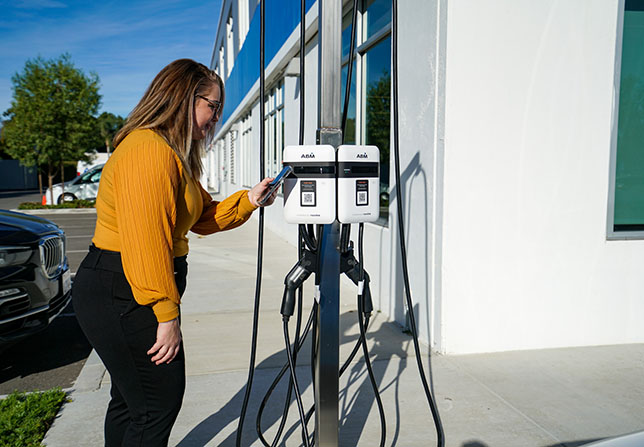
The Electric Vehicle (EV) revolution is upon us. A recent analysis by EY found that EV sales will outpace all other engines three years sooner than expected. This demand will be further driven by the Inflation Reduction Act with new incentives to encourage domestic EV production and ownership. Campuses need to be ready with convenient access to fast and reliable charging stations to support students, staff, guests, and electrified fleets.
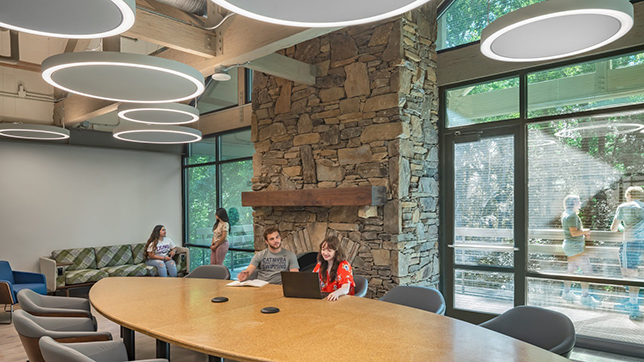
At Catawba College, home of the first certified net-zero campus in the Southeast and only the seventh in the United States, the Center for the Environment (CENV) features the Environmental Studies Department’s hands-on research laboratory. Built more than 25 years ago, the building needed major systems and aesthetics revitalization.
Iowa State University in Ames, Iowa, recently gained a new 1,375-MW solar farm on its campus through a partnership with Alliant Energy, according to a news release. Alliant installed 3,300 solar panels on campus that will generate energy and provide opportunities for education, agriculture research, and more.
Today’s K–12 leaders are tasked with everything from adhering to rigorous academic standards to implementing operational procedures to building healthy school communities, and for many, sustainability unintentionally falls to the bottom of the priority list. Further, the cost of taking on green initiatives is on the rise, making it even more of a challenge for financially strapped school districts to meet sustainability expectations and commitments.